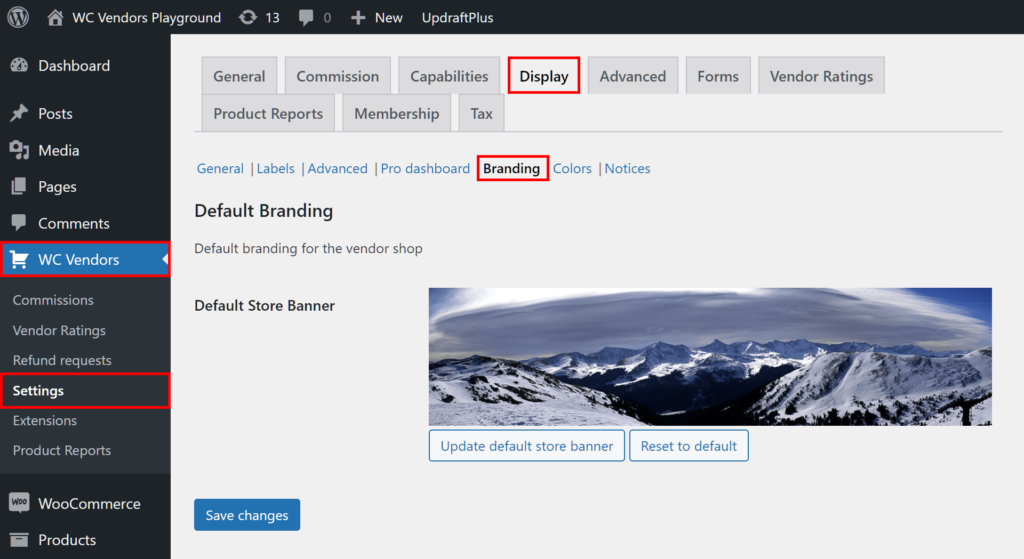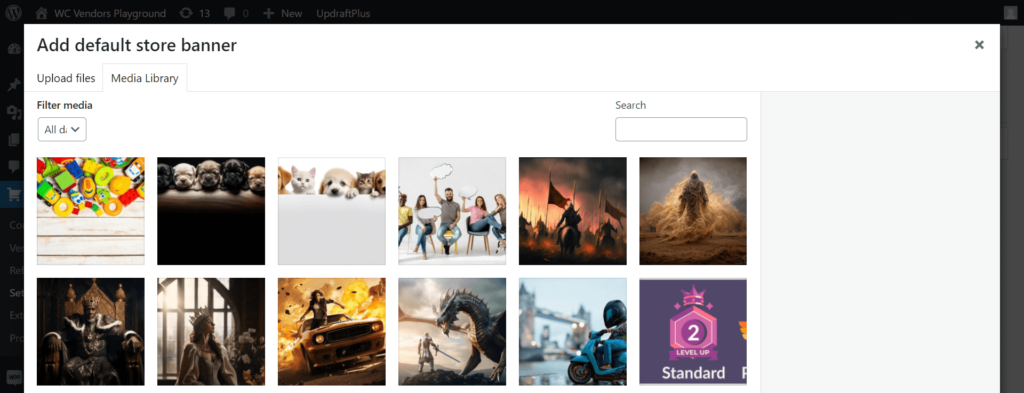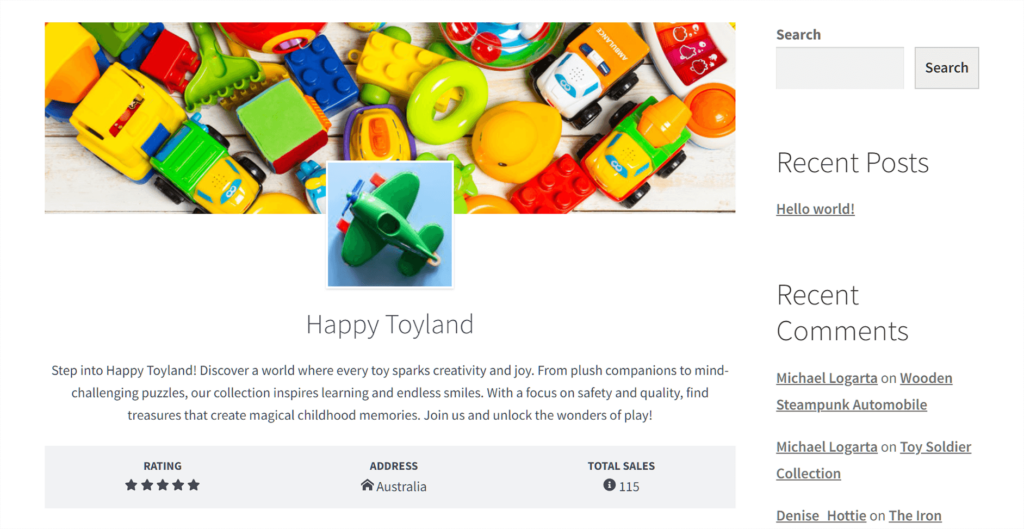
Whether or not you’re new to e-commerce, you should know that carving out a distinct identity for your online multi-vendor marketplace is paramount. Simply put, if you want your business to soar, you need to create a distinct, compelling, and memorable marketplace brand.
Take note, however, that an exceptional marketplace brand isn’t merely a logo or a catchy tagline; it’s the personality and perception that customers attach to your platform. Thus, it’s essential to craft a personalized brand, as it can set you apart, attract loyal customers, and foster trust among sellers.
Today, we’ll explore the ins and outs of personalizing your marketplace brand. In addition, we’ll give you a quick and easy guide on how to use WC Vendors to present your personalized brand to the world.
So let’s get started!
Understand Your Brand’s Essence
The first step to infusing your marketplace brand with personality and purpose is defining the fundamental identity and nature of your e-commerce platform. Among the most important aspects of this process is determining your values and pinpointing your audience.
1. Define your values
What values drive your marketplace? Is it a commitment to sustainability, quality, affordability, or unique products? Understanding your core values lays the groundwork for a cohesive brand image.
Let’s say you want to prioritize quality. A great way to emphasize this value is by ensuring that the products on your marketplace meet high standards. Brands like Apple focus on product excellence, creating a reputation for quality that drives customer loyalty and satisfaction.
If you want to focus on uniqueness, showcase exclusive or niche products that consumers are unlikely to find elsewhere. For instance, Etsy highlights handcrafted and unique items, fostering a community of artisans and buyers looking for distinctive goods.
On the other hand, if you’re committed to affordability, you should focus on offering competitive prices without compromising quality. For example, Walmart is famous for its value-driven approach; by offering a broad array of products at affordable prices, it appeals to cost-conscious customers.
2. Know your audience
Delve into the demographics, preferences, behaviors, and cultural expectations of your target customers and vendors. After all, tailoring your marketplace brand to resonate with your audience’s needs fosters a deeper connection.
For example, if your target demographic is young, urban professionals, it’s a good idea to sell trendy, tech-savvy products. Alternatively, if your audience is made up of older individuals, focusing on ease of use and simplicity might be of greater benefit to your platform.
How about preferences? If you’re targeting an audience that highly values personalized experiences, you could, for example, implement customization options. For instance, Nike allows customers to design their sneakers, catering to their preference for unique and personalized products. This customization feature resonates strongly with consumers who seek individuality in their purchases.
Or how about audience behavior? Basically, analyzing buying behaviors can reveal patterns. Thus, if your audience tends to research extensively before making a purchase, you should provide detailed product descriptions, reviews, and comparison tools. Best Buy capitalizes on this by offering comprehensive product information and customer reviews.
Lastly, you can analyze your audience’s cultural expectations. After all, adapting to cultural nuances can do wonders for your business. For instance, McDonald’s adjusts its menu to suit local tastes in different countries, showing an understanding of cultural preferences and behaviors.

Craft An Impactful Brand Identity
Now that you know the essence of your marketplace brand, it’s time to craft an identity that will attract consumers and encourage sales.
1. Create a distinctive visual identity
Ensuring that your platform stands out involves crafting a recognizable marketplace brand appearance. Basically, it should effectively communicate your brand’s values to leave a lasting impression.
Furthermore, being consistent with your visuals reinforces credibility, professionalism, and brand reliability.
For these reasons, you should:
A. Design a memorable logo
A well-designed logo can leave a lasting impression and become an anchor for marketplace brand recognition. Thus, design a simple yet unique logo that reflects your brand’s essence. Consider Nike’s swoosh or McDonald’s golden arches –simple yet instantly recognizable logos that have become synonymous with their respective brands.
Let’s say you’re running a marketplace for fresh, organic produce that emphasizes health and sustainability. A good logo design would be a simple apple with a heart-shaped leaf. In addition, you can use a modern, clean font for the brand name.
This conveys health, freshness, and eco-consciousness. Furthermore, it’s memorable and recognizable for health-conscious consumers who are seeking sustainable choices!
B. Select a cohesive color palette
Colors evoke emotions and associations. Therefore, choosing a consistent color palette that aligns with your brand’s identity is crucial. For example, the vibrant red of Coca-Cola or the calming blue of Facebook are colors that were deliberately chosen and consistently used across all brand materials. Consistency in color usage helps in reinforcing brand recall and creating a unified brand experience.
Imagine your platform sells flowers. For your marketplace brand, you could use rich, deep shades of green, complemented by soft, pastel tones of peach and cream. These colors evoke nature, tranquility, and elegance, mirroring the beauty found in floral arrangements. Consistent use of said colors across branding materials – including your website, packaging, and marketing – creates a serene and sophisticated brand experience.
C. Develop consistent visual elements
Apart from the logo and colors, establish a set of visual elements such as typography, imagery style, graphic motifs, or iconography. These elements should be consistent across your marketplace – from the website design to marketing materials.
For instance, if your brand emphasizes a sleek and modern aesthetic, use clean lines and minimalist design elements consistently. This uniformity contributes to brand coherence and strengthens brand identity.

2. Craft compelling messaging
Crafting compelling messaging is about creating a distinct voice for your marketplace brand. This voice should not only attract but also deeply connect with customers, fostering brand loyalty.
To develop a successful marketplace brand voice, you should:
A. Align your marketplace brand with your values
Your brand voice should mirror your platform’s core values of your marketplace. For instance, if your brand promotes sustainability, your messaging could emphasize eco-friendly practices and responsible consumption. This consistency strengthens your brand’s authenticity and reinforces its commitment to its principles.
B. Understand your audience’s preferences
Tailoring your tone to suit your audience’s preferences is crucial. If your audience responds better to a conversational and friendly tone, adopting such a voice helps build rapport. Conversely, a more formal tone might be more suitable for a professional or corporate audience.
C. Reflect marketplace brand personality
Your brand’s personality guides its voice. Whether it’s a fun, adventurous, serious, or nurturing personality, your messaging should reflect that. For instance, a brand focusing on children’s products might adopt a playful and whimsical tone to engage young parents effectively.
D. Practice consistency across platforms
Ensure your marketplace brand voice remains consistent across all communication channels. This includes website content, social media posts, emails, customer service interactions, and any other customer-facing content. Consistency fosters familiarity and trust, as customers come to recognize and appreciate your brand’s distinctive voice.
E. Adapt your tone as needed
While maintaining consistency, also be adaptable. Your tone might slightly vary based on the context or content. For example, an informative blog post might have a more authoritative tone, while a social media post could be more conversational and engaging.

Other Tips For Effective Marketplace Brand Personalization
To further boost the impact of your marketplace brand, we recommend employing the following strategies.
Personalize user experience
Customizable storefronts: Allow vendors to personalize their storefronts within the marketplace, enabling them to showcase their brand identity. This fosters a sense of ownership and encourages active participation.
Tailored recommendations: Leverage user data and AI algorithms to offer personalized product recommendations. This not only enhances the shopping experience but also shows an understanding of individual preferences.
Foster brand-customer relationships
Engage through content: Develop content (such as blogs, videos, or social media posts) that educate, entertain, or inspire your audience. We suggest sharing stories that align with your brand’s values, as this can create an emotional connection with your audience.
Prioritize customer service: Provide exceptional support and ensure a seamless, hassle-free experience. Remember that positive interactions leave a lasting impression and encourage repeat visits.
Leverage technology for personalization
Data-driven insights: Use analytics tools to understand customer behavior, buying patterns, and preferences. This data empowers you to make informed decisions in personalizing the user experience.
AI and machine learning: Implement AI-driven solutions to automate personalized recommendations, streamline processes, and enhance user engagement.
Measure success and evolve
Set metrics: Define key performance indicators (KPIs) to measure how well your personalized branding efforts are doing. This means monitoring metrics like engagement rates, customer retention, and conversion rates.
Adapt and innovate: Stay flexible and open to evolving trends. Keep on gathering feedback from customers and vendors, adapting strategies, and innovating to guarantee that your marketplace brand remains relevant.

How To Use WC Vendors To Personalize Your Marketplace Brand (In 3 Easy Steps)
As we’ve discussed, there are multiple benefits to gain from personalizing your marketplace brand. But how can you implement your unique branding on your platform?
You can use a powerful WooCommerce marketplace solution known as WC Vendors. However, you must first have an online store that’s powered by:
Then, once said online store is up and running, you must convert it into a multi-vendor marketplace using WC Vendors. For more detailed information on how to do this, read the following guides:
- How To Build Your First Multi-Vendor Ecommerce Website (Full Guide)
- How To Create An Online Marketplace: A Beginner’s Guide
With all that in mind, let’s start our quick guide on how to use WC Vendors to personalize your marketplace brand!
All the options necessary for marketplace brand personalization are found in WC Vendors’ Display section.
To get there, access your WordPress dashboard, then select WC Vendors > Settings. Next, click the Display tab followed by the Branding subtab.
As illustrated above, Branding allows you to choose your marketplace’s default store banner. This banner appears on every storefront unless the vendor uploads their own banner.
Now, it’s time to pick your default store banner.
Simply click the Update Default Store Banner button. Then, explore your media gallery and select the image you wish to use as your banner.
To ensure the success of your marketplace brand, it’s best to design your own banner. Remember to keep everything this article discusses in mind during the design process.
With your default store banner selected, every store that has no banner will display your chosen image.
You can change this banner any time you wish. In fact, it’s a good idea to update the banner every once in a while to reflect special occasions, events, and new developments where your platform is concerned. For example, during the holiday season, you can decorate the banner with elements such as snowflakes, gifts, and reindeer.
Step 3: Save your work!
Once you’re happy with your choice of default store banner, simply click the Save Changes button to activate all the changes you’ve made. And that’s it!
Extra tips!
Do you want your marketplace brand to produce the best results for your business? Then employ the following additional strategies:
1. Take advantage of free and paid themes
WC Vendors is compatible with hundreds of free and paid themes. The best of these allow you to customize your website’s various visual elements, from the layout of its pages to its color scheme. Use this to your advantage when designing your platform to showcase your marketplace brand!
2. Distribute marketplace brand guidelines to your vendors
Create and distribute a comprehensive marketplace brand guideline document to your team of vendors. This document should include details on logo usage, color schemes, typography, and any other brand-specific elements.
3. Have vendors leverage your marketplace brand
Have your vendors incorporate various marketplace brand elements in their own store branding. For example, you can have every vendor use your marketplace logo (and/or other elements) in their own store branding. Remember that consistency across vendor stores enhances marketplace brand recognition.
4. Embrace brand evolution
Keep evolving your marketplace brand strategy to adjust to market trends and customer preferences. Regularly update brand guidelines to remain relevant and appealing to your target audience.

Conclusion
Developing a marketplace brand that’s unique, appealing, informative, and relevant to your target audience is key to the success of your multi-vendor platform. After all, it can provide your business with a memorable identity that sticks in consumers’ minds and encourages them to keep buying from you.
When creating your marketplace brand, make sure to understand the essence of your marketplace brand, which entails:
Eager to craft an impactful brand identity? Then take steps to:
Furthermore, don’t forget to put other strategies into action, such as personalizing user experience, fostering brand-customer relationships, leveraging technology for personalization, measuring success, and evolving.
To use WC Vendors to personalize your marketplace brand, observe the following steps:
Still curious about how to personalize your marketplace brand? Then let us know in the comments section below; we’d be happy to help you!



